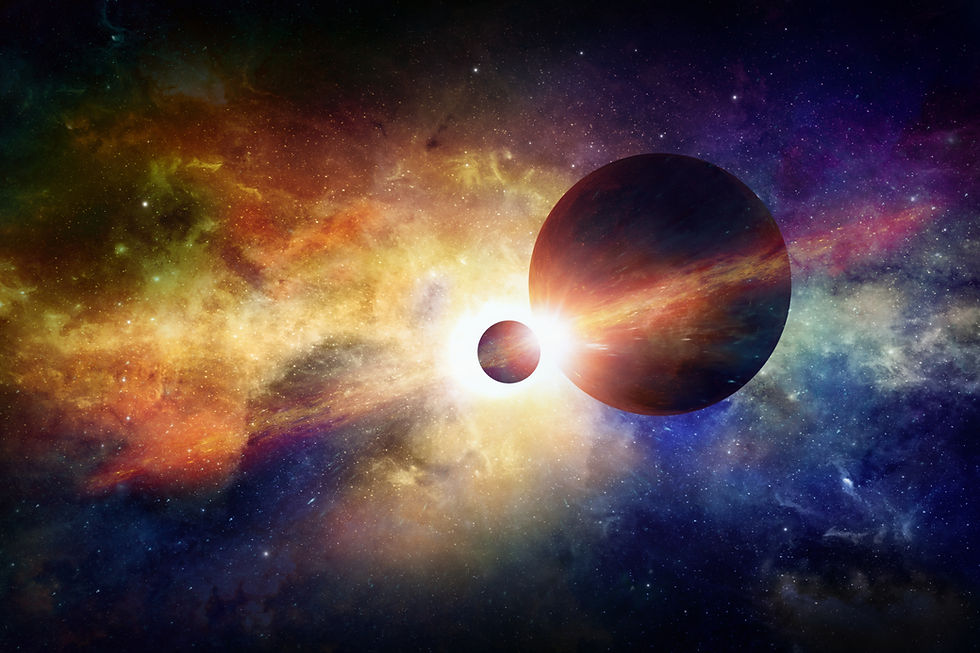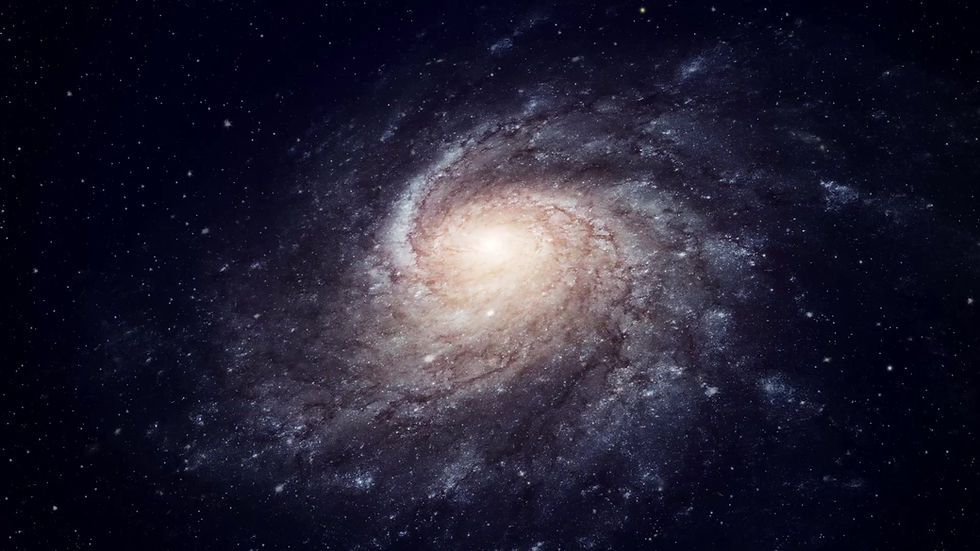
Researches
I'm a high school student, and all of my research projects have been conducted through self-study and personal dedication, without any guidance or support from mentors or organizations.

In this paper, I showed the derivation of the Heisenberg Uncertainty Principle (HUP) from the geometry of (anti)-de Sitter spacetime(ADSST). We extend our discussion to find the connection between the extended generalized uncertainty principle(EGUP) and triply special relativity(TSR).

In this study, we explore stable numerical approaches and various hyperboloidal coordinate choices for solving the wave equation on Schwarzschild-de Sitter spacetime, addressing the origin treatment and metric singularity issues.

This paper investigates the ”double field theory” (DFT) and the connection to the double copy method that shows that gauge & gravity theories are remarkably similar at the quantum level.

I tried to present a new approach of solutions to the Polyakov action, constructed upon graphs, which generalize the standard open and closed bosonic strings.
Through this paper I came to the conclusion that every parameter of a BH is altered by a ”Naked Singularity” and spin angular momentum is necessary for the creation of a wormhole as well as the removal of the event horizon and singularity. In Einstein’s Theory of GR, Schwarzschild’s solution gives a mathematical explanation of the gravitational potential around a spherically symmetric object with properties like zero charge, zero mass, and zero cosmological constants. So, in this paper which is based on mathematics of BH, I focussed to create the mathematical structure and formulation of wormhole from Naked Singularity of Kerr BH without event Horizon and ergo- sphere, considering time as imaginary to remove the concept of eternatilty of time. Also, through this paper I came to the conclusion that every parameter of a BH is altered by a ”Naked Singularity” and spin angular momentum is necessary for the creation of a wormhole as well as the removal of the event horizon and singularity

The paper commences by examining the geometric properties of de-Sitter space-time, with a specific focus on the isometries generated by Killing vectors. It also investigates various metrics that are applicable to specific regions of space-time, revealing that in the distant future, the symmetries exhibit a similar local structure to that of R^3.
Furthermore, the classical Klein-Gordon equation is solved within this space-time, leading to the discovery that energy is not conserved. The solutions to the Klein-Gordon equation yield intriguing outcomes that have the potential to enable observations from the early inflationary era. Finally, the primary objective of the paper is to comprehensively examine a quantized scalar field in the de-Sitter background, exploring the solutions for the two-point function and analyzing their behavior during both early and late time periods.

Exploring Deformed Metric Tensor through Noncommutative Heisenberg Algebra and Generalized Uncertainty Principle in the Context of Quantum Mechanics and Gravitational Fields
In this paper, I’ll provide an overall introduction of of quantum walks and its application to two search problems
1. The Historic Quantum random-walk search algorithm 2. A recent generalization for Spatial Search
This research presents a likelihood function to determine the H0 using a statistical approach. We combine distance information from GW observations with redshift data from EM observations of potential host galaxies. By integrating these datasets, we aim to offer a robust estimate of the H0

Through this paper, I tried exploring the intriguing relationship between Klein knots and Torus knots and tried to understand their mathematical connections. For this paper and repository, I wrote a Python algorithm that efficiently computes the bracket polynomial and the Jones polynomial of any Klein knot.
This report paper extensively draws upon the groundbreaking work of Robert Ghrist and Robert Holmes titled "An ODE whose solutions encompass a comprehensive range of knots and links.
'The Resurrected Cat Paradox' a version of Delayed Choice Experiment can be used to tackle the flaws of von -Neumann Wigner Interpretation.

The issue of redistribution of the vibrational-rotational energy of polyatomic molecules M and M1 in their pairwise collisions based on microcanonical distribution is taken into consideration in relation to the chaotic dynamics of the transient state in molecular and physicochemical transitions in quantum-classical mechanics. When the semiclassical approximation for the density of vibrational-rotational states is applicable, the statistical (canonical) distribution of the probability of energy change due to collisions in the case of a small impurity M in an equilibrium medium of M1 is obtained, along with all of its moments n, which are some polynomials of the nth order.
This report paper delves into the significance of cryptographic primitives and focuses specifically on secure hash functions. It explores their role in enhancing data security and examines their applications in various domains, shedding light on their importance in protecting sensitive information.
I explored the singularity theorem, Penrose’s seminal contribution to post-Einsteinian general relativity, which introduced the pivotal concept of a closed trapped surface.

This paper explores the fascinating evolution of string theory, from its origins as a novel approach known as ”bootstrap models” in relativistic particle physics to its current status as a candidate theory of quantum gravity.
Personal notes explore various aspects of cosmology, with a particular focus on the dynamics of a homogeneous and isotropic universe.
Personal notes on
Statistical Physics.
This article delves into the real meaning and significance of the Uncertainty Principle, shedding light on its implications across various scientific fields.
This article presents an investigation into the phenomenon of microwave-induced plasma in grape hemispheres. The experiment involved exposing pairs of grape hemispheres to intense microwave radiation, which resulted in the ignition of a plasma. We moved forward and made different cases to study properties of induced plasma in each cases

Authored Books

The initial chapters of the book explore mathematical aspects, including Spherical Trigonometry. Moving forward, we discuss intriguing theorems such as Fourier's, Taylor's, and Euler's Theorems. Later, we delve into the fascinating realms of Relativity and Quantum Mechanics, specifically focusing on Schrödinger's Quantum World. The book concludes with a discussion on Cause-Effect Relationships, Cosmos under the Lenses of Thermodynamics, the darkness of night sky, the enigmatic nature of Time, and matter-antimatter's presence.
Throughout the text, I have strived to present explanations and insights, incorporating relevant examples, videos, and links to further explore these captivating subjects. From intriguing paradoxes to philosophical implications, this book seeks to illuminate the world of Physics, offering a unique perspective and emphasizing the interplay between mathematics and observation.
I've tried to engage readers in thought-provoking discussions on various paradoxes and their applications in quantum physics. The journey through these concepts may be challenging but ultimately rewarding, unveiling the intricate nature of the quantum world

Geometric Kinematics in Lorentzian Geometry: Relativistic Motions and Their Characterizations
In this work, I've focused on the study of three notable motions in General Relativity, Uniformly Accelerated Motion (UAM), Unchanged Direction Motion (UDM), and Uniform Circular Motion (UCM) which are well-established concepts in Classical Mechanics. UAM was explored in Lorentz-Minkowski spacetime L^4 and referred to as hyperbolic motion. However, I aim to extend the analysis of these motions to arbitrary spacetimes using modern Lorentzian Geometry techniques.
In Chapter 1, I have explained the essential tools of (differential) Lorentzian Geometry, including the notion of time orientation for a Lorentzian manifold, which is fundamental in defining spacetime. The main focus of Chapter 2 is to introduce the Fermi-Walker covariant derivative of an observer and the associated Fermi-Walker parallel transport. This enables the analysis of an observer that follows a UAM, where their 4-acceleration remains constant in a general spacetime. Such an observer can be geometrically characterized as a Lorentzian circle. I also explored how trajectories of uniformly accelerated observers can be represented as the projection of integral curves of a specific vector field defined on a particular fiber bundle over the spacetime. Moreover, I discussed assumptions that ensure the absence of singularities for inextensible UAM observers within a finite proper time. Chapter 2 also delved into the study of UDM and UCM in arbitrary spacetimes. I analyzed these three motions from the perspective of the corresponding ordinary differential equations that define each motion. Throughout the work, I emphasized the significance of accurate techniques from Lorentzian Geometry, particularly the Fermi-Walker connection, which provides each observer with a moving gyroscope in their relative space at each instant of their proper time. These advanced tools allowed me to gain a deeper understanding of the motions observed in General Relativity.



